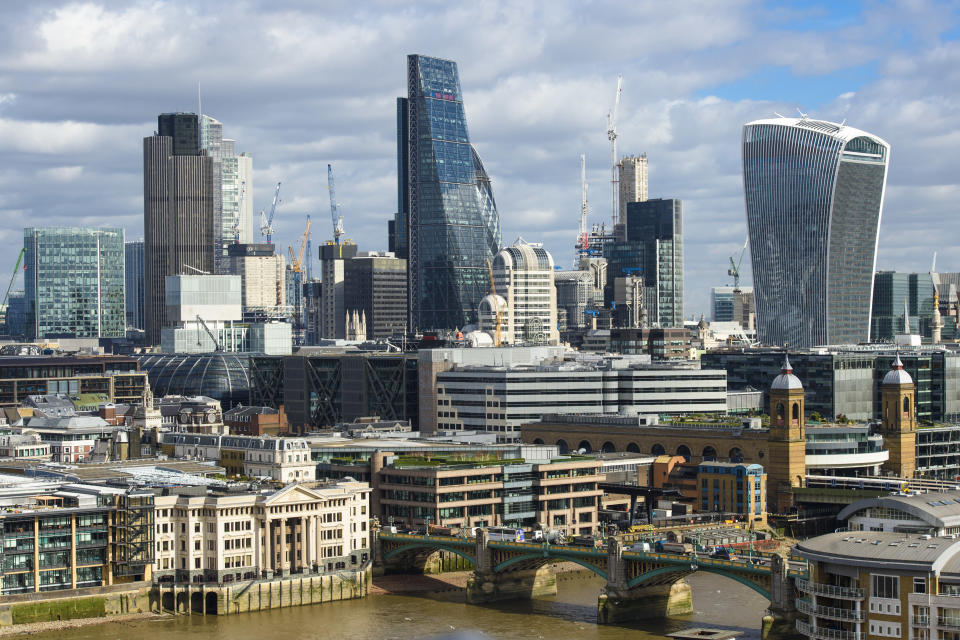City of London goes on borrowing spree for first time in years as austerity cuts bite

The City of London is going on a borrowing spree for the first time in years, with the authority struggling under the weight of huge infrastructure projects and government funding cuts.
The corporation, which governs the Square Mile, has also warned the area risks becoming more unsafe because its police force is suffering from a national funding squeeze just as demands on policing are growing.
Recent reports written by officials at the authority say its force will be in the red with a cumulative deficit of £53.5m in 2023, and warn planned savings may not be enough to close the gap.
One report said the City authority had benefited from “a period of relative prosperity” in recent years, with its income on the rise while many other local authorities have struggled under the weight of funding cuts.
READ MORE: Wages have kept on rising since the Brexit vote
It has previously been able to fund its capital spending on big projects by drawing on its sizeable reserves, selling off assets, effectively borrowing from itself, putting levies on developers or contributing from its normal budget.
But the report says there are now “significant risks and a great deal of uncertainty” for the authority’s finances in the near-future, with growing pressures on its resources.
It says external borrowing is needed because several major projects need funding on an “unprecedented scale,” and together demand a “step change in the previously debt-free status” of the City’s key funding pots.
Two of the biggest projects are the construction of a new “flagship” court and police station on Fleet Street, specially designed for handling cybercrime, fraud and economic cases, and the relocation of the Museum of London to Smithfield market.
The report estimates the net financing costs at £525.4m up to 2022-23 for the two projects alone.
READ MORE: Top business chief warns UK firms ‘complacent’ over no-deal risk
But it admits the City’s fund for its local authority and police services will start to come under “increasing pressure” from having to cover the costs of borrowing to finance the projects, which are expected to reach £21m a year.
The authority’s recent annual investment statement also notes borrowing rates have been “volatile” over the past year, with many other local authorities avoiding borrowing by running down their spare cash.
It may borrow partly from the Treasury’s public works loan board, banks and other private investors, according to the Financial Times.
The authority is also concerned about how it pays for its day-to-day spending, with its reserves finite and a further squeeze predicted on its local authority and police funding.

It says the City’s pot of general reserves could run out by 2022-23 if used to cover the deficit in the local authority and policing budgets.
Officials fear the City will lose out further from government proposals for ‘fairer funding’ for authorities based more on need, which could “shift resources away from London,” as one report notes.
A “fundamental review” of the corporation’s priorities and spending is now planned over the course of the year amid the increased concern over putting its finances on a sustainable footing.
Plans already on the cards include selling off its surplus property assets and a recently announced council tax hike this year for the first time since 2009-10. The 4.99% increase means the average Band D property in the Square Mile will see its annual bill rise from £933 to £973.
A City corporation spokesman said: “The City Corporation has an ambitious programme of major projects and other activity to deliver a vibrant and thriving City. These radical plans will help keep the City, London and the UK fit for the future.
“Whilst these projects will help us create a legacy for London, we will have to invest substantially for them to be successful, financing them through a number of means, including external borrowing.
“The way in which we have prudently managed our finances in the past enables us to invest with confidence for the future.”

 Yahoo Finance
Yahoo Finance 